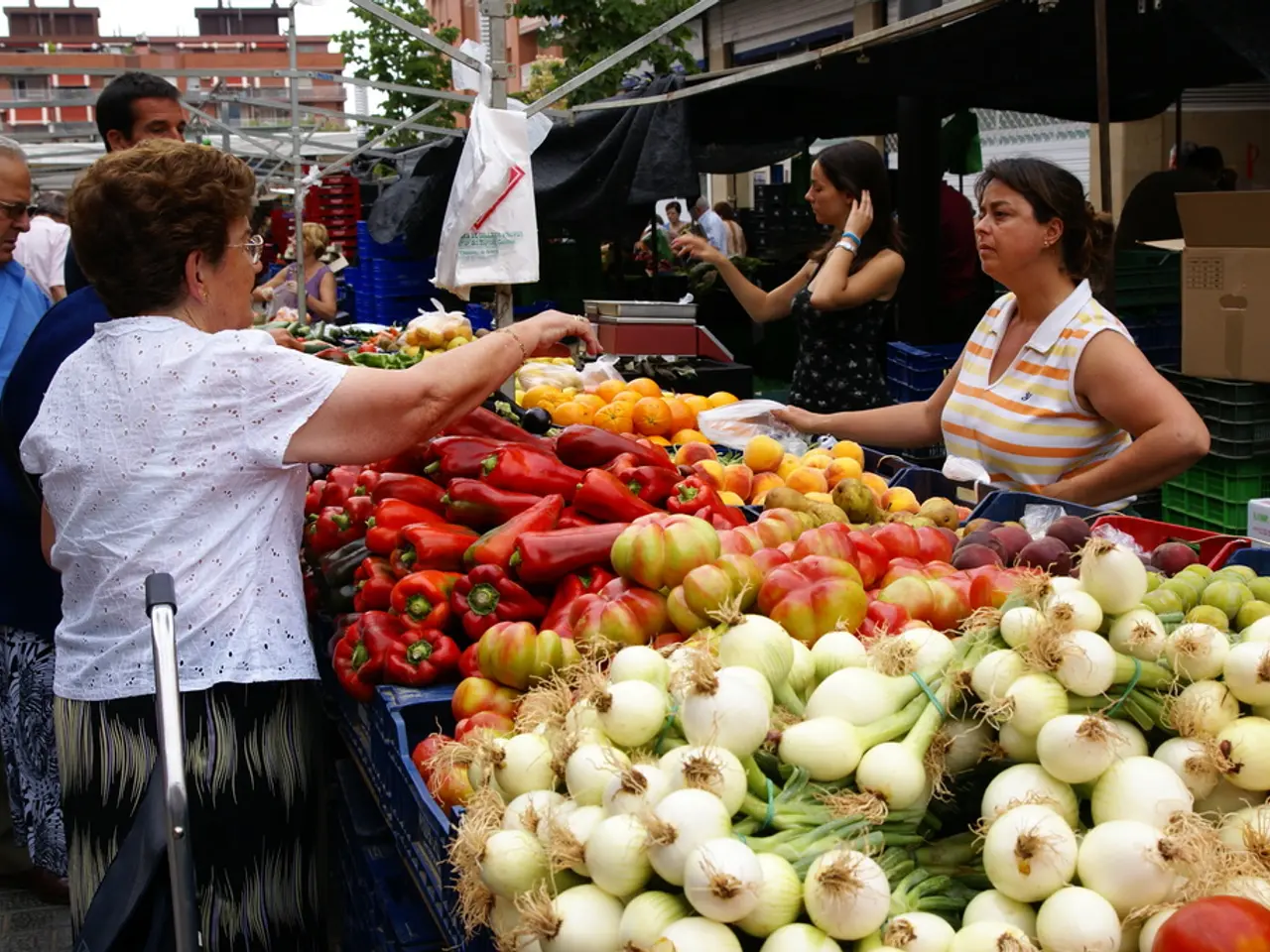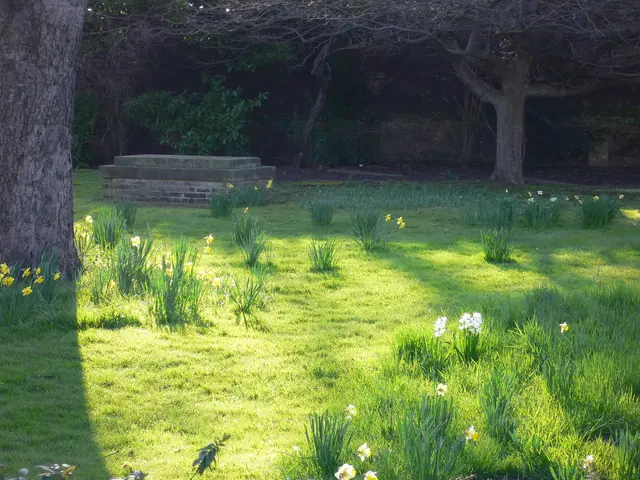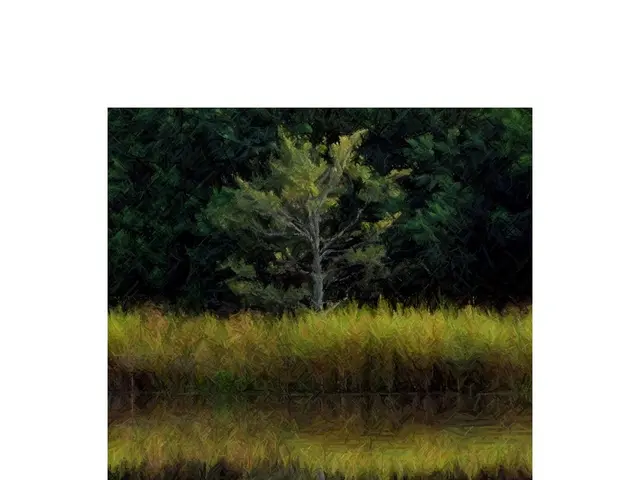Creative Windowsill Vegetable Container Suggestions
Growing fresh veggies and salad leaves straight from your windowsill is a breeze! Springtime is the perfect season to get started, whether you're sowing seeds or planting potted or plug plants. Utilize multi-purpose compost, combined with slow-release fertilizer granules, for most vegetables. Experiment with grouping plants that thrive in similar conditions or make good companions - for instance, marigolds emit chemicals that repel pests, while nasturtiums attract pollinators. These vibrant additions will not only enhance your container gardens but also help control pests and attract beneficial insects.
Take a look at these fantastic windowsill veg container ideas for exciting harvests:
Lettuce and Radish
Lettuce plugs will mature in just a few weeks, leaving room for a quick-growing crop of radishes in between. Harvest the lettuce's outer leaves to encourage more growth. Purple salad leaves are a great cut-and-come-again crop, so keep sowing new seedlings to fill in any gaps.
- Harvest Time: lettuce in 30 days from plugs; radishes in 25-50 days from seed.
Kohlrabi and Beetroot
Create a fun, affordable container by poking holes in the base and adding stones for weight. This container provides the perfect home for leftover veggie plants or thinned seedlings. Here, we planted beetroot, kohlrabi, and salad leaves with trailing nasturtium to attract pollinating insects and keep pests at bay. Ensure proper watering!
- Harvest Time: beetroot and kohlrabi in 35 days; lettuce in 30 days - all from plugs.
Peas, Beans, and Carrots
Peas, beans, and carrots make for efficient use of space since they grow differently: peas and beans grow up, while carrots grow down. Use dwarf varieties to grow in pots, and provide enough compost depth for carrots. Support the growing veggies by anchoring twiggy pea sticks in the deep compost. Regularly harvest peas and beans for more growth, and water them frequently, particularly as pods develop.
- Harvest Time: beans in 30 days; peas in 60 days; carrots in 80 days - all from plugs.
Carrots and Spring Onions
Carrots appreciate some jostling among other veggies, but they need depth, so opt for round varieties for container gardening. Grow spring onions with them to help deter carrot root fly and improve space utilization. Chrysanthemums can also be incorporated for added defense against carrot pests. Carrots are relatively resistant to drought, so they should thrive in this unconventional home.
- Harvest Time: carrots and spring onions in 45 days from plugs.
Tomatoes, Chives, and Marigolds
This rustic willow planter houses tomato plants, which should produce an abundance of fruit if kept watered and fed with tomato fertilizer as the flowers appear. Chives will repel aphids and can be added to tomato salads, while marigolds help prevent whitefly. If space is limited, plant companion plants in small pots nearby.
- Harvest Time: both tomatoes and chives in 120 days from plugs.
Chillies, Onions, Oregano, and Mint
Long-term container residents like chilli plants need plenty of food to fruit, so add slow-release fertilizer to the compost at planting and give weekly potassium-rich feeds when they start to flower. Regular picking encourages more fruits. The onion is planted to repel aphids, while oregano provides soil coverage as a mulch. Mint also keeps pests at bay.
- Harvest Time: 3-5 months for plugs.
Tips for Container Success
- Maximize Your Space: Extend your windowsills by placing an old garden table, chair, or bench in front to benefit from additional warmth and support more sowing experiments.
- Embrace Variety: Almost any receptacle can be used if it fits, has drainage holes, and is secured safely. Salad leaves can tolerate just 15cm of compost, but most vegetables need more. Anchor containers with stones in the base.
- Keep Them Hydrated: Give daily irrigation, especially in hot weather, as pots dry out quickly. Tomatoes require picking when ripe or they'll quickly spoil, whereas chillies should be harvested frequently to encourage more fruit growth.
- Proper Care: Pick peas from the base of the plant and spring onion leaves from the outside-in. Use small scissors to harvest just what you need.
- Experiment with container gardening by combining carrot, spring onion, and chrysanthemum plants. Carrot roots appreciate the space, while chrysanthemums provide added defense against carrot pests.
- For a vibrant and beneficial container garden, consider companion planting with lettuce, radish, kohlrabi, beetroot, and nasturtium. This arrangement encourages growth, attracts pollinators, and keeps pests at bay.
- To make the most of your space, follow the garden design idea of growing peas, beans, and carrots in a single container. This space-efficient setup allows peas and beans to climb upwards while carrots grow downwards, using dwarf varieties for container planting.








